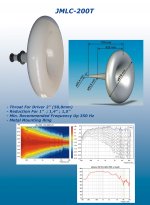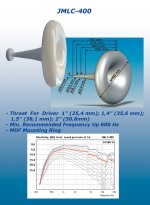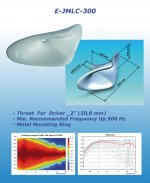One more record from that concert ("Black Hole" tango):
http://wavebourn.com/music/zane/zane_2_1.mp3
http://wavebourn.com/music/zane/zane_2_1.mp3
Where do i pay for more. Brother and Father are both guitarist and would flip out over this.
The song is about what happens when 2 stars merge. 😀
One more record from that concert ("Black Hole" tango):
http://wavebourn.com/music/zane/zane_2_1.mp3
Gave me a huge grin, hearing those ladies praising Toliks system

Yep, it's party time!It's official bring your Toga's ! Kegger at Pano's!
A friend who heard the system last week came up with a name. Since there is a 15", a horn and a bullet tweeter, he calls it "Fifteen, Horny and Bullet-proof." I think we can all relate. 😀
Gave me a huge grin, hearing those ladies praising Toliks system
Actually, they praised microphones. 😀
I tried to explain them that microphones themselves are nothing without the whole system, but anyway they begged me to sell microphones. I sold, but I doubt they have such quality connecting them to Mackie boomboxes. 😀
Yes, that's the one.
It didn't sound like condensors then, but now that I hear it on a computer with headphones, now it sounds like condensors.
I think the secret to Pano's system is the front horn on the woofer. Everything else is obviously important, but to get that 3D imaging, you need the direct sound to arrive reflection free, or rather, to not have any early reflections in the 100-1000 Hz region.
And yes, he has done really well with his system. A lot of people claim that stereo is inherently flawed, and you start to believe them. But Pano's system proves it's not true, that you can have a deceptively real illusion of space and sound.
Weren't you using a Class-D amp of your own design the time I came over?
And yes, he has done really well with his system. A lot of people claim that stereo is inherently flawed, and you start to believe them. But Pano's system proves it's not true, that you can have a deceptively real illusion of space and sound.
Weren't you using a Class-D amp of your own design the time I came over?
Last edited:
Yeah, I think so. Didn't play any Class-D while Charlie was here. We were having too much fun with push-pull pentodes and Class-A Mos-Fets.
There's been a lot of talk about large format compression drivers in this thread with larger IE 2" exits and all that.... ...well... today I got a 1" exit C.D.... that weighs like 15+ lbs, and has a 3" voice coil. This fella pictured on the left:
I think I am going to have a LOT of fun with this horn build based on what I'm reading from you guys in the last few threads. THough I don't want to push my expectations TOOOOooO high..
An externally hosted image should be here but it was not working when we last tested it.
I think I am going to have a LOT of fun with this horn build based on what I'm reading from you guys in the last few threads. THough I don't want to push my expectations TOOOOooO high..
It's much better when you use a large format driver with a bass and sub bass system that can keep up in sensitivity (dynamic scale) and where the midbass can have somewhat of directional control. Using a direct radiator in a box is mostly for folks that either really don't want full scale realistic reproduction or are still in the beginning compromise stages of building a horn system
What is that? I don't recognize it at all. Looks like a beast.
Denovo BA-750, designed to mate with the SEOS-18 or larger waveguides diyaudio member Scaper's been organizing the group buys for. I think the exit angle is around 6.5 degrees (or 13 if you define it that). The IR is pretty clean:

What do the SPL or CSD plot look like?Denovo BA-750, designed to mate with the SEOS-18 or larger waveguides diyaudio member Scaper's been organizing the group buys for. I think the exit angle is around 6.5 degrees (or 13 if you define it that). The IR is pretty clean:

What do the SPL or CSD plot look like?
I would have asked for the impedance plot personally.. 😱
True, it's not easy to get these low voltage high current solid state devices to work right. There seems to always be a tradeoff which differs with the loudness of normal playback. Good horns sort of make amplifier deficiencies more obvious when they produce a more unified diffraction free wave front.Part of the reason I was throwing cold water on comments about transistor amps (or chip amps, or Class D) with horns is that I've yet to hear it sound good. I'm not saying it's impossible, just that I haven't heard it for myself, and much of my preference for the Altec/GPA 416B and Altec/GPA 288 or Radian 745Neo is based on what I've heard and liked, not Internet buzz or fashion-following.
....
That would have been my third question😉I would have asked for the impedance plot personally.. 😱
Lynn... and all 2" CD large horn experts...
If the design plan is to add a small horn or ribbon super tweeter ~6KHz to 7KHz, (1)why not use a larger JMLC_200T horn with a 2" compression driver like the Radian 950-PB in order to get the best 700Hz lower Xover and greater dynamics? (2) Is it just the horn's physical size.... too big for living rooms? (3) OR does audio quality suffer on large horns? audio quality suffer on 2" CD over 1" or 1.4" CD?
Experts like Dr. Geddes measure excellent polar response data from a 15" woofer + large OS-waveguide 2-way Summa speaker that technically prove using a 1" mylar-suspension compression driver like the DE250 at low home SPLs can cover 740Hz to 20Khz with modest high frequency boost. It seems that Dr. Geddes believes the coherent polar response from just one horn all the way up to 20KHz is more important than the dynamics from a 3-way with a larger diameter compression driver mid-horn plus supertweeter. The JMLC400 supports a 1" CD mount. (4)Would using the JMLC400 with a 1" CD from 740Hz-20Khz with the DE250 lose too much midbass dynamics over a 1.4" compression driver like the Altec288?
The Big Lips horns are my favorite.
If the design plan is to add a small horn or ribbon super tweeter ~6KHz to 7KHz, (1)why not use a larger JMLC_200T horn with a 2" compression driver like the Radian 950-PB in order to get the best 700Hz lower Xover and greater dynamics? (2) Is it just the horn's physical size.... too big for living rooms? (3) OR does audio quality suffer on large horns? audio quality suffer on 2" CD over 1" or 1.4" CD?
Experts like Dr. Geddes measure excellent polar response data from a 15" woofer + large OS-waveguide 2-way Summa speaker that technically prove using a 1" mylar-suspension compression driver like the DE250 at low home SPLs can cover 740Hz to 20Khz with modest high frequency boost. It seems that Dr. Geddes believes the coherent polar response from just one horn all the way up to 20KHz is more important than the dynamics from a 3-way with a larger diameter compression driver mid-horn plus supertweeter. The JMLC400 supports a 1" CD mount. (4)Would using the JMLC400 with a 1" CD from 740Hz-20Khz with the DE250 lose too much midbass dynamics over a 1.4" compression driver like the Altec288?
The Big Lips horns are my favorite.
Attachments
- Home
- Loudspeakers
- Multi-Way
- Beyond the Ariel


